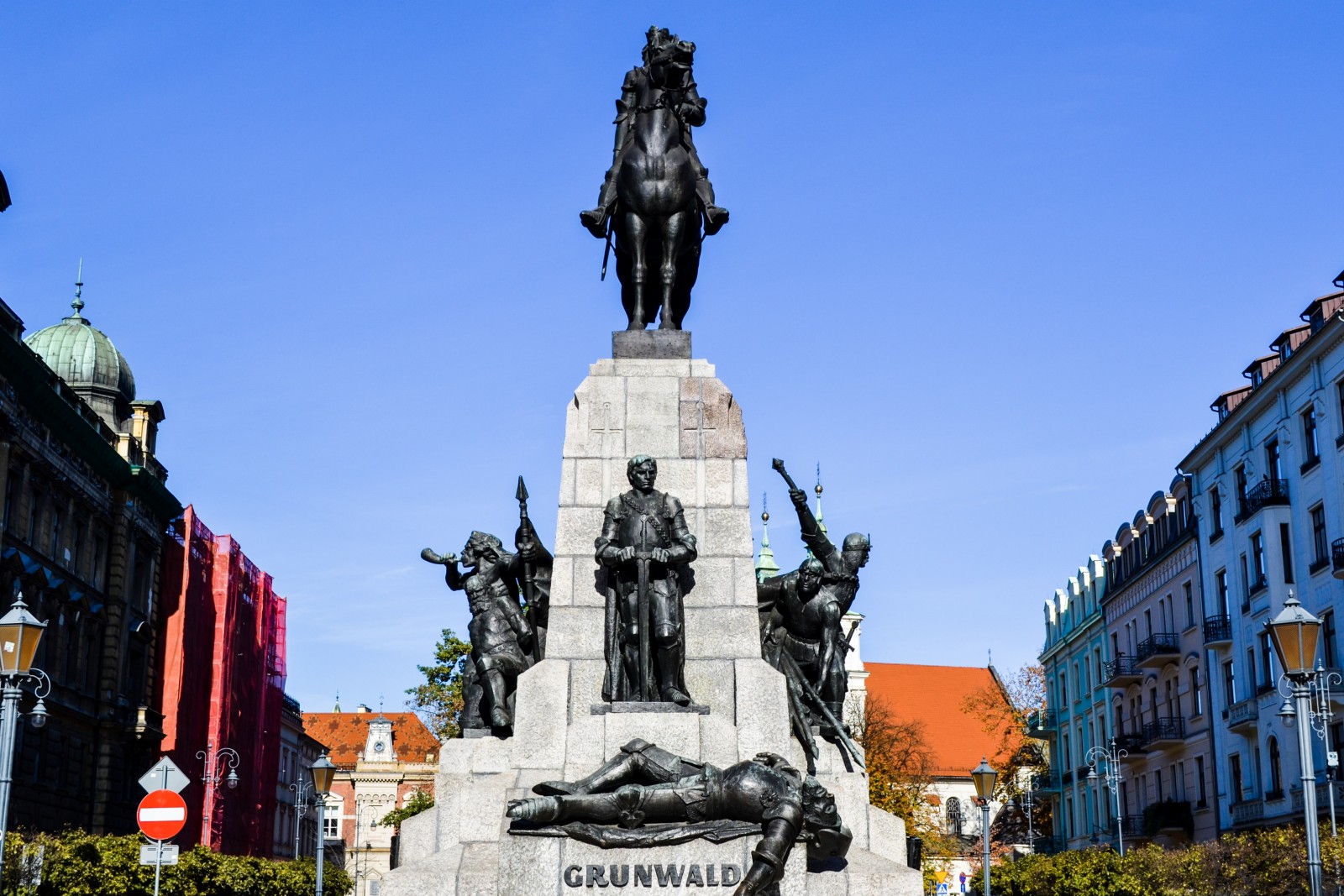The Grunwald Monument

The Grunwald Monument
The Grunwald Monument [Polish: Pomnik Grunwaldzki] is an equestrian statue of the king Władysław II Jagiełło, erected in 1910 according to the project by Antoni Wiwulski and Franciszek Black. Placed on Jan Matejko Square in Kraków, it commemorates the 500th anniversary of the Battle of Grunwald in 1410.
The memorial was founded by the distinguished Polish pianist and future Prime Minister of Poland Ignacy Jan Paderewski, who established it 'for the glory of our forefathers and for brothers for courage' [Polish: 'Praojcom na chwałę braciom na otuchę] which has been engraved on the pedestal. Unfortunately, the Grunwald Monument was demolished in 1939 by Germans, and reconstructed only in 1976, following the design of Marian Konieczny. In front of the statue there is the Tomb of the Unknown Soldier.
On the day of 15 July 1410, on the plains nearby Grunwald village, one of the largest and bloodiest battles in the history of medieval Europe was fought. The allied Polish and Lithuanian forces, which were commanded by the king of Poland Władysław II Jagiełło and the Grand Duke of Lithuania Vytautas, defeated the Teutonic Knights and German chivalry that was united with them. It was a total victory - the power of State of the Teutonic Order was broken and the Jagiełło dynasty was raised to the rank of the most important dynasties in Europe. For these reasons, the Battle of Grunwald is considered to be the most important triumph of Poland in her long and proud history.
The top of the 24-metre memorial is crowned with the statue of the king Władysław Jagiełło on his horse. In his right hand the king holds a naked sword. On the front wall there is a figure of Lithuanian duke Vytautas, who was Jagiełło's cousin, Underneath, dead Grand Master of the Teutonic Knights Urlich von Jungingen lies at duke's feet. The east side of the monument presents Polish knights who pick up Teutonic banners from the ground. On the west side, there is a Lithuanian warrior blowing his horn and holding a tied up Teutonic captive. Finally, the back wall of the monument features a Polish peasant who is breaking down his chains as a symbol of victory.
The construction of the memorial took place in the conspiracy, since Kraków was then the part of Austrian partition. At that time, Polish country didn't exist on the map of the world. It can therefore be said that the Grunwald Monument was created ''to lift up the hearts'' of Polish nation. The statue was solemnly revealed on July 15, 1910 at high noon. The ceremony was attended by 150,000 visitors as well as a great number of Kraków's citizens and the speeches were delivered i.a. by the mayor of Kraków Juliusz Leo and the founder of the monument Ignacy Jan Paderewski.
Due to its historical dimension and national importance, the Grunwald Monument was gradually being destroyed during the World War II. Eventually, in 1945 it was blown up with dynamite by the retreating Nazis and the dismantled figures were transported to Germany. Over the following years its place was empty and only on 6 October 1976 the Grunwald Monument was recreated in its former location. Fortunately, because in 2010 Poland was able to celebrate there the next round anniversary of the battle and 100th anniversary of the monument's foundation. Located right behind the Barbican and near Academy of Fine Arts, the monument stands as a symbol of struggle for Polish statehood and another must see position on the map of Kraków.
